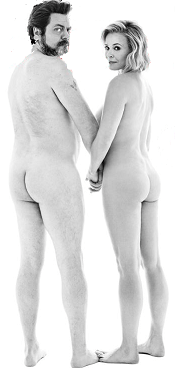
True change only happens when there is a need; and a need is only perceived when there is a crisis. Another way to put it is that change only happens through conflict. Is it through challenges, stresses, trials, errors and setbacks that a character evolves into the person that he or she needs to become in order to achieve the goal that they have set for themselves at the beginning of the movie.
Your first job as the writer is to understand where your character ends up at the end of the movie. What has s/he accomplished? What has s/he learned? How has s/he changed?
Your second job is to figure out where you character starts at the beginning of the story.
Because a story is a document of change, in the beginning your character should be sufficiently different from the end for the obvious to recognize the change the character has gone through. The bigger the difference, the greater the change, the more powerful your story will be.
In “Animal House,” John Belushi starts as an irresponsible, drunk frat-boy and ends up a US Senator. In “Birdman,” Michael Keaton is a washed up, desperate actor; at the end, he is a respected talent with the self-confidence to literally fly.
Sometimes no change is the best change
Sometimes the protagonist doesn’t change. Instead the antagonist and the people around him or her are the ones who change. When this type of character is the protagonist, s/he is usually a loner with his or her own moral code who refuses to bend to the will of others. In the end, s/he causes change in the world around him or her – usually by vanquishing a villain and setting an oppressed people free. This is the standard model for most westerns and action movies where the hero is more of an icon than a real human being.
Often times, this type of character is the mentor who stays true to a set of values that s/he passes on to the hero. Often – but not always – these characters end up sacrificing themselves for good of the hero, as does Obi-Wan-Kenobi in “Star Wars” in order for Luke Skywalker to take on the Death Star as a Jedi Knight.
Make ‘em like your main character
A script is a relationship between a writer and a reader. You want the reader to invest the time to read your script and the emotion to care about your story. To do that, you have to make them like you – in this case, your story.
Because that starts with your characters, you need to get the reader to like you protagonist and antagonist. There are many ways to do this.
Usually, it involves finding a moment early in the story where your hero can demonstrate his or her dominant trait and emotional in a clever or pleasing way.
The old adage is to have your character pet a dog. If dogs like people, we tend to as well. It can also be done through a clever line, a unique point of view, a distinctive trait or a funny moment that shows humility, kindness or concern for others. In your villains, it can involve showing their intelligence, cunning, brutality, bitchiness or ambition.
However you choose to do it, you have to earn your reader’s affection. You do that by creating believable characters that a reader admires and wants to root for as he or she follows your main character through the travails of your story.
Stakes
A common question to ask regarding your characters and story is, “What’s at stake?” If there’s no reason to care about what the protagonist is doing, the audience won’t engage in your story.
The most obvious thing to ask yourself is, “What happens if the protagonist doesn’t get what s/he is after?” If the answer is, “Not much,” you haven’t told your story well.
The most basic stakes are survival.
We need to be safe, to live, to have a roof over our heads. Another is the need to be loved. A variation of this is the need of a strong friendship. Another is personal integrity and self-esteem. A writer raises the stakes in a story by including more than one.
Most movies have some form of survival stakes as well as personal stakes, relationship stakes and success and achievement stakes. The more stakes you have in your story, the more ways you have to hook your reader and have them root for your character to succeed.
The more an audience experiences a character’s desire to achieve, the more the audience connects with that person.
Nice blog thanks for postting
LikeLike